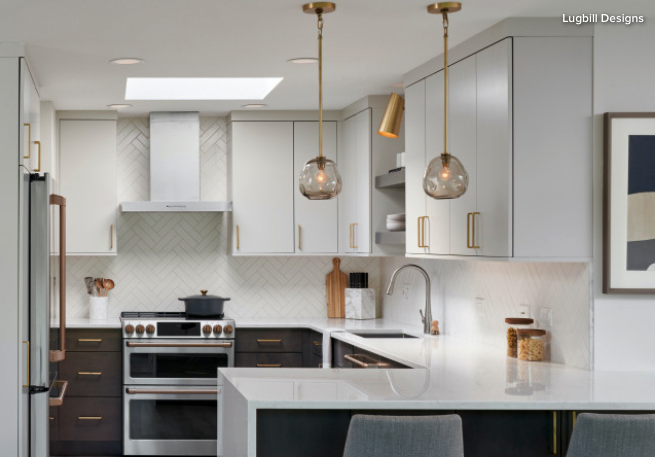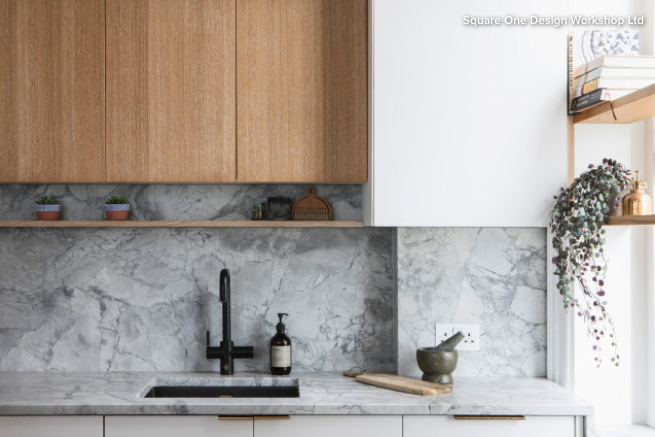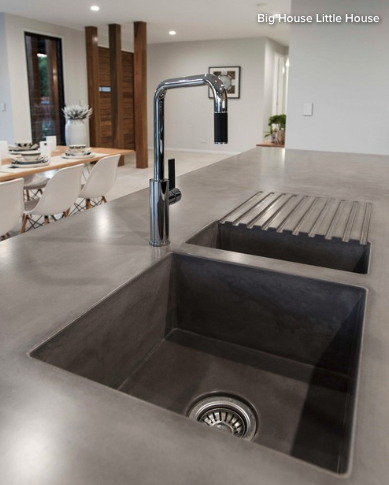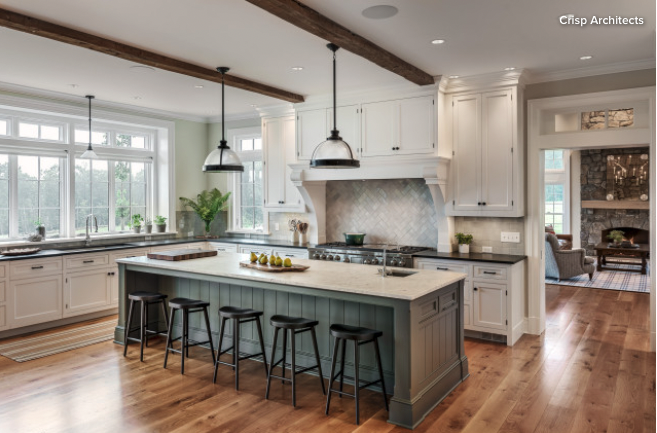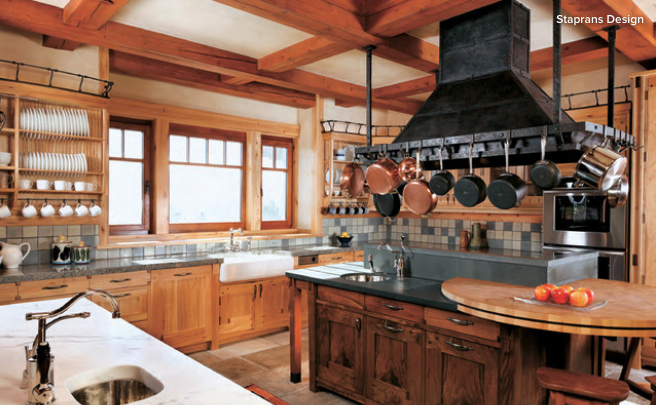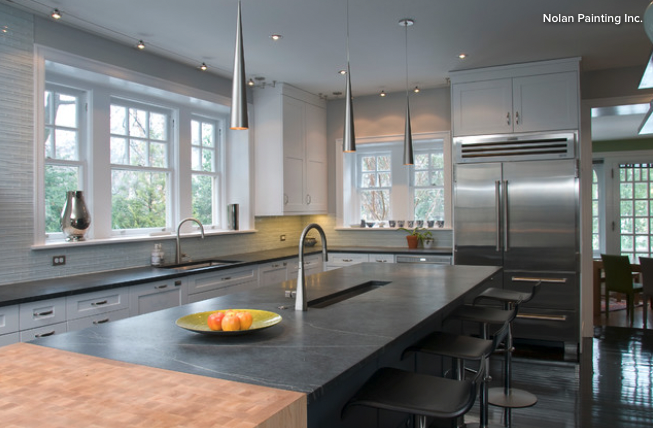In addition to choosing the best material, mounting type, number of bowls and bowl depth for your kitchen sink, you also have a range of sink size options. An extra-wide kitchen sink will obviously give you more space for food prep and cleanup, and you might prefer it over the confines of a smaller sink, but bigger sinks typically cost more and can take up valuable real estate in a small kitchen.
Feeling overwhelmed? Don’t worry. We’ve pulled together kitchens that feature various sink sizes, along with tips to help you figure out the perfect sink size for your cooking and cleaning needs.
1. Size Your Sink to Your Kitchen
It may seem obvious, but if your kitchen is on the smaller side, consider installing a smaller-width sink. An oversize, triple-bowl model would have overwhelmed this charming but compact loft kitchen. The more modest-size, yet still deep, the single-bowl apron-front sink is large enough to accommodate most kitchen tasks, but it isn’t a space hog. Countertop and base cabinet storage areas are likely to be at a premium in a smaller kitchen, so a smaller-width sink will improve overall function too.
2. Size Your Sink to the Window Above It
Homeowners often install a kitchen sink beneath a window, preferably a window with a nice view. But some homeowners overlook how these two elements work together. That’s not to say your sink and window need to match widths exactly, but it can look odd to have a super-wide sink set below a skinny window and vice versa.
3. Size Your Sink to Be a Focal Point
If you choose to go with an extra-wide sink, you’re going to have a difficult time disguising it. My advice is to take the opposite approach and make your wide sink a focal point. Repurpose an interesting salvaged sink or consider an unusual material, like copper.
4. Size Your Sink to Your Budget
This might also be obvious, but it’s all too easy to fall in love with a huge, gorgeous, apron-front sink only to find that it’s priced well above what your budget will allow.
Installing all top-of-the-line materials, fixtures and appliances in a kitchen doesn’t make sense for everyone, so it’s helpful to strategize on where you’re going to spend money and where you can save.
Personally, I’d rather splurge on my countertops or kitchen floor than the sink. After all, you can get a perfectly good 20-inch-wide stainless steel undermount sink for less than $200.
5. Size Your Sink Based on Your Needs
If you’re an avid cook who prefers hand-washing dishes to running the dishwasher, a large divided-bowl sink with an integrated drainboard is a great option. The wider sink allows multiple people to work at the sink without getting in each other’s way, and that built-in drainboard makes the business of draining and air drying dishes less of a wet mess.
A sink this size will require an extra-wide sink cabinet and will take up quite a bit of space, so it’s best for a generous-size kitchen.
If you need a hand with prepping meals or cleaning up, consider installing two single-bowl sinks instead of one extra-large sink. A configuration like this allows two cooks to work together, and because these sinks are set apart, traffic jams are less likely.
If you have the space and budget for it, a three-sink setup is nice for a multicook household that does a lot of entertaining. The separate sinks allow several people to work in the kitchen simultaneously. None of the sinks needs to be exceptionally large. One main sink can handle bigger tasks and the others can be sized much smaller. Of course, this configuration has the potential to be costly due to the duplicate plumbing fixtures and installation fees.
6. Consider Fun-Size Sinks
I love these linear sinks. While it’d be difficult to wash dishes in one, they work just fine for fetching a glass of water or dumping out abandoned drinks when the party’s over. You can also fill one with ice and stash cold drinks in it, a nice alternative to keeping an unsightly cooler in the kitchen or having guests rummage through your refrigerator for a cold one. And it doesn’t take up much space on the countertop.

